With a little over 25% of the 2024-25 NHL season complete (by total games) — and all but one team, the Vancouver Canucks, at or beyond the 20-game threshold — it’s time to take a snapshot of each team’s progress.
There have been some positive surprises — like the Winnipeg Jets, Minnesota Wild and Washington Capitals — and some not-so-positive shocks too, like the sluggish start for the Nashville Predators, Boston Bruins and St. Louis Blues, the latter two of which made coaching changes within the past week.
Which teams have earned A’s for their play thus far? Who is falling behind? Read on for the report cards for all 32 teams.
Note: Teams are arrayed alphabetically by letter grade. Ryan S. Clark graded the Pacific and Central Division teams, while Kristen Shilton graded the Metropolitan and Atlantic Division teams. Stats are through the games of Nov. 24. Preseason over/unders are courtesy of ESPN BET.
Jump to:
ANA | ARI | BOS | BUF
CGY | CAR | CHI | COL
CBJ | DAL | DET | EDM
FLA | LA | MIN | MTL
NSH | NJ | NYI | NYR
OTT | PHI | PIT | SJ
SEA | STL | TB | TOR
VAN | VGS | WSH | WPG

A grades

Preseason over/under: 100.5
Current points pace: 121.0
What’s gone right? Well, how much time do you have? Because Carolina ranks in the top 10 of nearly every statistical category. There were preseason concerns (reflecting in their projected points pace) that the Hurricanes were bound to take a step back with their aging blue line and injury-plagued goaltenders. Carolina has proved its critics wrong through powerhouse performances from Martin Necas (31 points in 19 games), Andrei Svechnikov and Sebastian Aho (both averaging a point per game), excellent defensive play (Carolina is fourth in goals against, first in shots against and shots on net), strong special teams (with a seventh-ranked power play and eighth-best penalty kill), plus a coming-of-age goalie in Pyotr Kochetkov. Oh, and offseason signee Jack Roslovic? He’s having a career-best start, too.
What’s gone wrong? One prediction that has, unfortunately, materialized for Carolina is another long-term injury to Frederik Andersen. This time, it’s knee surgery. Andersen has missed significant time the last two seasons with a lower-body issue, and then blood clotting problems. Carolina is likely mulling whether a trade must be made to shore up its goaltending given the spring could be a long one. The Hurricanes have also been prone to turnovers at times, and that’s come back to hurt them. All in all though, the Hurricanes are tough to nitpick. They’ve been consistently good.
Grade: A+. It’s only a quarter way through the season but still, Carolina hasn’t lost consecutive games yet (seriously). Even when the Hurricanes stumble, there’s an immediate, positive response. It speaks to Carolina’s maturity that they can remain focused and dialed in on their habits regardless of the situation they face. And it’s difficult to be so strong offensively and defensively; there truly isn’t one area where Carolina feels lacking. If the Hurricanes can stay relatively healthy, it’s hard not to see them pushing to represent the Eastern Conference in the Stanley Cup Final.

Preseason over/under: 93.5
Current points pace: 117.1
What’s gone right? They’re continuing to show progress under John Hynes. It’s been nearly a year since the Wild hired Hynes to take over on Nov. 27, 2023. Since then, the Wild have continued to build upon the progress Hynes established. with their defensive structure paying dividends. The Wild are in the top 10 in fewest shots allowed per 60, fewest scoring chances allowed per 60, and have allowed the fewest high-danger chances per 60. And if that’s not enough, they’re in the top 10 in goals per 60 and goals per game.
What’s gone wrong? Yakov Trenin‘s start to the season. An argument could be made for a penalty kill that went from being in the bottom three to still being in the bottom 10. But Trenin’s lack of production gives him the edge. Managing cap space has arguably been Bill Guerin’s strongest trait as a GM because of the $14.743 million combined in buyouts for Zach Parise and Ryan Suter. It’s why the decision to sign Trenin to a four-year deal worth $3.5 million annually drew attention. So far the return on that investment has been lacking, with Trenin sitting on zero goals in his first 20 games after hitting double figures in each of the last three seasons.
Grade: A+. Kirill Kaprizov is eating souls in a manner that could have him in contention for the Hart Trophy. A defensive structure that suppresses high shot totals and scoring chances is working in tandem with a pair of goalies that have a top five team save percentage. And above all? They’re scoring goals and can still get even more from certain parts of their supporting cast. Every season, there’s a team that went from the playoff wilderness to being a rather dangerous hunter. It’s possible this season’s version of that is the Wild.

Preseason over/under: 89.5
Current points pace: 113.2
What’s gone right? Washington might be the darlings of this NHL season. The Capitals certainly weren’t pegged to be one of the top Metropolitan clubs, or even a bonafide playoff contender. But Washington isn’t sneaking around this season (like they did into the playoffs last year). The Capitals are strong all around. The offseason addition of Logan Thompson was brilliant (he’s 8-1-1, with a .914 save percentage and 2.58 goals-against average), and Washington has been strong defensively in front of him (allowing fewer than 30 shots on net per game).
It’s the Capitals’ offense that’s especially productive though, and made them the league’s highest scoring club (averaging 4.05 goals per game). Dylan Strome is on fire (with 28 points in 20 games), Alex Ovechkin is nipping at Wayne Gretzky’s heels (with 15 goals in 18 games prior to his recent injury) and Connor McMichael has been superb collecting 13 goals in 20 games.
What’s gone wrong? The Ovechkin injury was a true disappointment for the Capitals. It’s rare Washington’s leader ever goes down with something like this fractured fibula, and it did put a stop to what was an undeniably entertaining first few weeks of him chasing Gretzky’s record. Washington has room to improve on special teams (their 20th-ranked power play is at just 17%) although the fifth-ranked penalty kill is pulling its weight. The Capitals also rank too high in losses when scoring first; holding onto leads and closing teams out will be a continued priority for Spencer Carbery’s charges.
Grade: A+. Washington is dynamic without sacrificing defensively. That’s basically the dream. The Capitals have established a strong foothold in the Eastern Conference with their depth, and a clear vision from the top down on how they need to play to have that constant success. Even when Washington is off — like in recent back-to-back losses to Colorado and New Jersey — they’re not alarming defeats (both were by a single goal). The Capitals appear to learn from their mistakes and get stronger because of them. If that holds — and Ovechkin can return to his prior form quickly post-injury — it could be a year to remember in Washington.
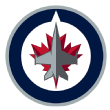
Preseason over/under: 95.5
Current points pace: 134.2
What’s gone right? Practically everything under the sun. The Jets are second in the NHL in goals per game, just percentage points behind Washington. They’re second in shooting percentage with 13.4 percent success rate. They’re allowing the third-fewest goals per game. Their power play is scoring at a rate of 33.9 percent while their ability to score is so balanced that they already have 11 players with more than 10 points. They’re giving Connor Hellebuyck a level of offensive production that’s only made life easier for the two-time reigning Vezina Trophy winner.
What’s gone wrong? Not much. But if there has to be an answer, it’s their penalty kill, but even that comes with caveats. The Jets have a league-average PK that has a 77.9% success rate. While it’s one of the few areas in which the Jets are not among the league leaders, it hasn’t been a problem in a way that has cost them multiple losses.
Grade: A+. Right now, there are three questions facing the Jets. Is this the best team in the NHL? How long can they sustain this start? And the third and perhaps most important: Can they translate their early-season success into the postseason and advancing out of the first round? The Jets have used the last several seasons to show that they are a perennial playoff team. Showing that they are one of the teams in the West that can challenge for a Stanley Cup, however, has been the problem. Is this the year that changes?
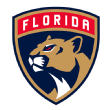
Preseason over/under: 102.5
Current points pace: 93.2
What’s gone right? Florida looks primed to run it back — right into a third consecutive Stanley Cup Final appearance. Bold? Maybe. But the Panthers could do it. Florida is cruising along with a top-five offense (3.58 goals per game), a top-10 power play (23.7%) and penalty kill (82.5%), and they’re a relatively tight group defensively (allowing just 28 shots on goal per game). Sam Reinhart (with 29 points in 19 games) is proving last season’s breakout was no fluke, Sam Bennett is a point-per-game player and the Panthers’ depth scoring remains enviable. Coach Paul Maurice has Florida on track again to be a balanced, bullish contender.
What’s gone wrong? The Panthers’ major faults have come on the goaltending and defensive side. Sergei Bobrovsky‘s numbers are mediocre by his standards (.893 SV%, 2.98 GAA) and Florida is 12th in goals against (3.26 per game). The club lost Brandon Montour in free agency, and that’s a large hole to fill on the blue line. Florida is also one of the most heavily penalized teams in the league, potentially alluding to a lack of discipline that could be harmful in key moments going forward.
Grade: A. Florida could easily get a pass on starting slow after consecutive short summers. And yet the Panthers are skating close to the high expectations that come with being reigning league champions. It’s a testament to how Florida has operated in recent years — GM Bill Zito has prioritized internal signings (like with Reinhart) and maintaining that consistency appears to be paying off. The Panthers have real chemistry and aren’t just star-driven. There’s enough talent to feel secure that, on most nights, they can and should be favored to win.

Preseason over/under: 97.5
Current points pace: 111.8
What’s gone right? Jack Eichel could have the best season of his career. When it comes to the Golden Knights, the whole has always been greater than the sum of its parts. It’s just that many of those parts have also been NHL All-Stars in the past. Eichel’s time in Vegas has seen him win a Stanley Cup while re-establishing his place as one of the game’s top 10 centers. What he has done this season, however, has him on pace to finish with his first 100-point season.
What’s gone wrong? It’s something with their defensive performances, but what it is remains a question. On the surface, the Golden Knights are 15th in goals allowed per game which is right at league average. Here’s where it gets complicated. Their structure has allowed the fifth-most scoring chances, the fifth-most high-danger chances and the seventh-most shot attempts per 60. But their goaltending is also in the bottom third of team save percentage despite the fact their goalies are either slightly above or below league average in terms of goals saved versus average (GSVA).
Grade: A. The cap crunch caught up to the Golden Knights which led to a mass exodus in the offseason. They’ve responded to those departures by playing at a pace that could see them best their point total in 2023-24 by nearly 11 points. While losing captain Mark Stone to another injury in the midst of a strong start is an issue, the Golden Knights appear to have the depth to once again handle that void. And if they can find cohesion when it comes to their goal prevention tactics? It could see them pose an even stronger case for adding another championship.
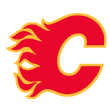
Preseason over/under: 81.5
Current points pace: 100.6
What’s gone right? Dustin Wolf has been their most consistent player. Wolf has used the first quarter of the season to show he can handle the demands of being a No. 1 goalie. The Flames are still using a tandem approach with Wolf and Dan Vladar. It’s just that Wolf was responsible for eight of the Flames’ 11 wins through Nov. 22. He was tied for third with a .926 save percentage and was 10th in GAA as of Nov. 22.
What’s gone wrong? The disconnect between their goals and offensive metrics. Being a team that’s in the bottom 10 of goals per game typically suggests that everything about their attack is a challenge. But their underlying metrics suggest otherwise as they are 10th in shots per game while also being 12th in both scoring chances per 60 and shots per 60. While it’s clear the Flames are getting chances on net and are consistently generating a strong volume of scoring chances, they’re still trying to solve the mystery of turning that into goals.
Grade: A-. Going into the season, there was a belief that after missing the playoffs in 2023-24 the Flames could be in the discussion in 2024-25. So far, they’re off to the kind of start that should keep them in that mix. Wolf’s efforts in net could help the Flames stay in the playoff chase while strengthening his bid for the Calder Trophy. If the Flames can find a way to turn their strong offensive metrics into goals? It could make them one of the West’s more formidable teams for the remainder of the season.
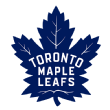
Preseason over/under: 102.5
Current points pace: 109.3
What’s gone right? Toronto might be the only NHL team to lose its best player (Auston Matthews) to injury and play significantly better without him. But that’s how the Leafs’ season has gone, with veterans and new additions alike stepping up to fill the void. John Tavares looks renewed, averaging a point per game, Mitch Marner is taking advantage of a contract season with terrific play (28 points in 21 games), William Nylander is flying (24 points in 21 games) and Toronto has lost only one game since losing Matthews. New coach Craig Berube has the Leafs playing a more defense-focused game too, something that’s hindered Toronto in the past. But perhaps the biggest game-changer this season has been Anthony Stolarz in net. He wasn’t pegged initially as the club’s starter, but he’s been excellent (.927 SV%, 2.18 GAA), as has Joseph Woll (4-2-0, .922 SV%, 2.00 GAA).
What’s gone wrong? The Maple Leafs’ sick bay has become alarmingly full. Beyond Matthews, Toronto has lost Max Domi, Calle Jarnkrok, Max Pacioretty, David Kampf and Matthew Knies to various ailments. And of course, Ryan Reaves went and got himself suspended for five games, further degrading the Leafs’ depth up front. Toronto managed with a patchwork offense, although they are only 16th in scoring (averaging 3.05 goals per game). The Leafs’ awful power play numbers to start the season have only recently begun to recover (they’re 15th now, at 20%). Toronto’s hardest days though may still be ahead. Center depth could become a larger issue (the Nylander experiment there did not pan out) and the Leafs have to hope there are healthier days on the horizon.
Grade: A-. Toronto has overcome its share of hurdles already and looks stronger because of them. The Leafs have plugged skaters into new roles — like Bobby McMann in a top-line role — and seen young skaters like Knies truly begin to thrive. What stands out about the Leafs though is they are more balanced than ever. Defense, for the first time in years, isn’t an issue, and Toronto is showing its more than just an offensive powerhouse; the Leafs can win tight, low-scoring games as well. Maybe it’s the new mindset under Berube but these Leafs are tougher all around than versions of this team in the past.

B grades

Preseason over/under: 103.5
Current points pace: 106.6
What’s gone right? Their second line. Everything Matt Duchene, Mason Marchment and Tyler Seguin have done to this stage of the season reinforces why the Stars are one of the strong favorites to win the Stanley Cup. Duchene’s second season in Dallas could see him break the 90-point mark for the first time in his career. Marchment, who scored a career-high 55 points in 2023-24, is on pace for 78 points. Yet it’s Seguin who could be enjoying the best season of the trio and is on pace to score 30 goals and score more than 60 points for the first time since the 2018-19 season.
What’s gone wrong? Their power play. Averaging 3.39 goals per game (10th in the NHL) has not translated to the extra-skater advantage. After finishing sixth last season with a 24.2 percent success rate, the Stars are only converting 16.1 percent of their chances in 2024-25, which ranks 25th. So what’s changed? They lost Joe Pavelski, who led them with 10 power-play goals, to retirement. Roope Hintz and Jason Robertson, who were second and third in power-play goals, have combined for two points in the Stars’ first 18 games on the man-advantage. That’s also the same amount of points Miro Heiskanen had through 18 games after finishing with 21 power-play points last year.
Grade: B+. They have the goal-scoring power to keep pace with teams or put them away. They have a defensive structure that once again ranks in the top 10 of scoring chances allowed per 60 and shots allowed per 60. They’re No. 1 overall in GAA at 2.32 and fifth in save percentage. They also have a top 10 penalty kill. But the power play remains a concern. Especially when one looks at the fact the power play went 0-for-14 in the Western Conference finals loss to the Oilers.
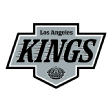
Preseason over/under: 96.5
Current points pace: 93.2
What’s gone right? They’re (mostly) filling their Drew Doughty void. Doughty remains out on a month-to-month basis while he recovers from a fractured left ankle sustained in the preseason. The injury left questions about how the Kings would manage without Doughty, who was among the league leaders in ice time and played in every situation. They’ve done it by using Brandt Clarke and Vladislav Gavrikov. Clarke has provided the Kings with a puck-moving option that’s filling in as the first-team power play quarterback, while Gavrikov is leading them in short-handed minutes. Gavrikov also leads the Kings in average ice time while Clarke is fourth.
What’s gone wrong? Their power play has struggled. Even though Clarke is third on the team in power-play points, it’s still a unit that has largely struggled. It’s the fourth-worst unit in the NHL with a success rate of 15.6%. Last season, they were 12th and boasted a 22.6% conversion rate. One difference could be the Kings are missing two players who were among their primary contributors. Despite his struggles, Pierre-Luc Dubois was third on the team with seven power-play goals as was Doughty. It’s also possible the Kings could gain cohesion once Doughty, who also had 20 power-play points, returns to the lineup.
Grade: B+. Trying to win games without a top-pairing do-everything defenseman can prove challenging enough. But the Kings have made it work by committee and also received some of the more consistent goaltending in the NHL, which hasn’t always been the case. Still, everything the Kings accomplish during the regular season comes with questions about if they can parlay that into postseason success and avoid what a fourth consecutive first-round exit.
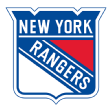
Preseason over/under: 100.5
Current points pace: 102.5
What’s gone right? New York is the same reliable group it’s been the last few regular seasons. That is to say, the Rangers are a star-powered offensive team with excellent goaltending. Artemi Panarin has scored at a blistering pace (26 points in 19 games), Alexis Lafreniere is making that seven-year extension look good (with 16 points in 19 games), Will Cuylle has leveled up, and the Rangers are hovering around top 10 in league scoring because of their depth (averaging 3.42 goals per game). Igor Shesterkin remains elite as ever (.914 SV%, 2.82 GAA) but New York doesn’t need him to be the savior. There’s a solid defensive foundation in place led by Adam Fox‘s strong performance and excellent special teams (including the second-ranked penalty kill) have kept the Rangers humming.
What’s gone wrong? It’s the small things that can put New York off its game. Recently it’s been poor first periods throwing the Rangers off track and forcing New York to try battling back from early deficits. The Rangers also give up a surprisingly high number of shots on net (32.6 per game, fourth most in the league), a product of New York being too frequently hemmed into their own end. Being stingier on defense is something coach Peter Laviolette should be emphasizing, especially after the Rangers’ latest skid where they were outscored 9-4. That’s led to speculation about certain Rangers’ veterans being on the trade block in an effort to freshen things up. Injuries have become a concern as well, from Filip Chytil still sitting on the sidelines to Chris Kreider — one of the names being bandied about as potentially on the move — recently joining him there.
Grade: B+. New York hasn’t taken any steps backwards. The Rangers are a contender in the Metropolitan because of a balanced approach that doesn’t force them to lean on any one aspect of their game. The key for New York is to maintain its consistency. When the Rangers slip up it’s usually because their attention to detail — particularly on the defensive side — is falling, or they’re relying too heavily on power-play opportunities to make a difference. New York is a good team, period. When the buy-in is all there, they look like a tough out.

Preseason over/under: 98.5
Current points pace: 98.4
What’s gone right? Tampa Bay has mastered the art of retooling on the fly. The Lightning said goodbye to captain Steven Stamkos, hello to Jake Guentzel, and carried right along looking like a contender. Nikita Kucherov is once again among the league’s top scorers (with 29 points in 18 games), Guentzel being a point-per-game guy and Tampa’s entire offense is humming along in the top five (averaging 3.67 goals per game). Andrei Vasilevskiy remains in fine form between the pipes (with a .919 SV%, 2.13 GAA and a 300th career win under his belt) and Victor Hedman is the backbone of a solid defensive group.
What’s gone wrong? The Lightning are trending slightly behind their projected points pace, and have weathered some uncharacteristic losing skids (the longest being four games already). Tampa Bay has played down to their competition, too (and underestimated a few opponents — see the blown 3-0 first period lead recently against Columbus). The special teams have been middle of the pack, and haven’t generated the same positive momentum shifts as before. A lingering injury to Brayden Point hasn’t helped matters of course, but Tampa Bay’s issues don’t stem so much from offense; it’s consistency from a full-team defense effort that will keep the Lightning on track.
Grade: B+. The Lightning find ways to win because there’s a foundation of winning and general excellence at the core of their organization. It’s expected that Tampa Bay will overcome its own challenges and come out the other side stronger. That said, the Lightning can’t become complacent here. They’re ranked among the Atlantic’s best teams because of a powerful offense, but their defensive play has felt too precarious. Vasilevskiy can do plenty in helping the Lightning shine, but relying too heavily on goaltending is rarely a strong pursuit in the long term. If Tampa Bay can continue striking the right balance they’ll be right in the mix come spring. Again.

Preseason over/under: 101.5
Current points pace: 109.3
What’s gone right? New Jersey at its best is playing hard, physical hockey. Cliche? Yes. True? Fact. The Devils were pushed around in seasons past, but the offseason addition of Brenden Dillon, for example, has helped set a tone for New Jersey. Speaking of offseason moves, acquiring Jacob Markstrom has (finally!) set the Devils up for success in net. Markstrom is providing a much-needed boost in goal (.907 SV%, 2.54 GAA) and that, along with New Jersey’s overall defensive buy-in, has has them 6th in goals against per game (2.61). Meanwhile, Jesper Bratt (28 points in 23 games) and Jack Hughes (25 points in 23) are packing a punch up front, and the Devils’ special teams have been good. In most ways New Jersey has performed right to expectations.
What’s gone wrong? Inconsistency. New Jersey has lost to San Jose, only to beat Florida in consecutive games. They’ve been blanked by Tampa Bay — and then crushed the Hurricanes. Being shutout happens to the Devils too frequently for that matter, with their last three defeats all coming without a goal from New Jersey. It suggests a lack of depth scoring the Devils must address. And they have been average in shot generation (16th), another potential offensive issue that could slow New Jersey’s progress. First-year coach Sheldon Keefe may still be getting his message across to the Devils.
Grade: B. New Jersey is right on pace with where they’re supposed to be. Nothing wrong with that — but it also feels like the Devils could be further ahead. They have weathered some injury issues but none so debilitating that the Devils couldn’t rally. It’s putting together the same effort each night that will move New Jersey along. Backsliding against the league’s lowest-ranking teams only to rise against stiff competition rarely takes a club where it wants to go in April. The Devils establishing and maintaining an identity from here is critical.

Preseason over/under: 99.5
Current points pace: 99.3
What’s gone right? They’re one of the strongest defensive teams in the NHL. Forget about the fact that the Canucks are allowing the 10th most goals per game for a moment. When it comes to their underlying metrics, they’re actually one of the most suppressive teams in the league when it comes to other areas. They lead the league in fewest scoring chances allowed per 60 while allowing the sixth-fewest shots per game. They’re also fourth in fewest high-danger chances allowed per 60 and ninth in the fewest shots allowed per 60. But if they’re that good … why are they giving up so many goals?
What’s gone wrong? The disconnect between their defensive structure and goalies. We mentioned some of the metrics above, but take a look at the Canucks’ team save percentage. Only seven teams in the league have a lower save percentage than the Canucks. Veteran Kevin Lankinen has a minus-3.4 GSVA whereas young playoff hero Arturs Silovs is at minus-6.9 which is 71st out of the 76 goalies who have played a game this season. This is another reason why the eventual return of Thatcher Demko could have a massive impact on the Canucks.
Grade: B. Could the Canucks receive more goals and a bit more offensive consistency similar to what they had last season when they were sixth in goals per game? Sure. They’re still in the top half of the league in goals scored. It’s just that one of the key principles of Rick Tocchet’s system is being defensively responsible. If the Canucks can continue to add goals to their two-way approach, it could help them offset the inconsistent performances they’ve received in goal.
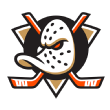
Preseason over/under: 72.5
Current points pace: 77.9
What’s gone right? Their goaltending has been among the best in the NHL. Seeing how Lukas Dostal would perform with John Gibson recovering from an injury was a major question facing the Ducks to start the season. Dostal has answered, posting a .924 save percentage and a 13.7 goals-saved above expected which was the best in the NHL through Nov. 22, according to MoneyPuck. Gibson’s first three games have all been victories in which he recorded a save percentage of more than .900 in two of those games. Altogether, the Ducks have the eighth-best team save percentage in the NHL.
What’s gone wrong? They’re struggling to score goals. The Ducks are currently ninth in the NHL in goals per game (2.62 per game). Of their 48 goals, 20 of them have been scored by just four players. Some of that stems from the fact they have the 12th fewest shots per 60. But what makes that even a bit jarring is that the Ducks are league average in high-danger scoring chances and scoring chances per 60. So while they might not record a high volume of shots, they’re still creating chances at a rate that should hypothetically yield more results.
Grade: B-. What they’ve done to this point in the regular season suggests certain parts of their rebuild could be taking a step toward progress. But that’s not to say there aren’t areas of concern. Yes, there’s the lack of goals. But there’s also the reality the Ducks might be relying too much on their goaltending to win games.

Preseason over/under: 88.5
Current points pace: 89.8
What’s gone right? Buffalo weathered early hardships and came out the other side looking stronger for it. The Sabres have seen solid production from top skaters like Tage Thompson (18 points in 16 games), Alex Tuch (21 in 21) and JJ Peterka (16 in 19) while Rasmus Dahlin is back carrying a heavy workload (nearly 25 minutes per game) to anchor their back end. That’s allowed Buffalo to hover near the top 10 in league scoring (averaging 3.24 goals per game) and their power play has recovered from being atrocious to slightly below average (17.5%). Goaltender Ukko-Pekka Luukkonen (8-4-1, .910 SV%, 2.55 GAA) gives the Sabres a chance every night he’s in net, too. When Buffalo is healthy they can keep up with the competition and put themselves in that playoff discussion.
What’s gone wrong? The Sabres aren’t on a clear-cut path to the postseason and that was the ultimate goal going into this campaign. That 1-5-0 start put Buffalo behind the eight ball in a competitive Atlantic Division, and forced them into catch-up mode. While Luukkonen has taken over the starter’s job, Devon Levi was a disappointment (2-5-0, .870 SV%, 3.95 GAA) before being sent down to the minors. Buffalo is middle of the pack in goals against per game (3.10) and 18th in shots against per game (29.0), which too often is contributing to self-inflicted wounds. Lindy Ruff hasn’t quite found the right mix everywhere, on offense or defense, and so Buffalo isn’t getting into a rhythm it can sustain. It all feels part and parcel with taking on another new head coach’s strategy and structure.
Grade: B-. Buffalo gets graded on a slight curve here because going overseas to play those first two games in Prague was its own adventure. But, the Sabres are behind their internal expectations to make the playoffs. GM Kevyn Adams didn’t make any big swings to improve through the offseason, and while Buffalo’s top performers are showing their mettle, others haven’t — Jack Quinn, Zach Benson and Dylan Cozens are all trending well below expectations and that’s where the Sabres need to see a shift if they’re going to sneak into an Eastern Conference wild card spot by spring.

Preseason over/under: 102.5
Current points pace: 89.5
What’s gone right? Their superstars have been at their best. Nathan MacKinnon is performing as if he could win a consecutive Hart Trophy. Cale Makar is playing as if he could win a second Norris Trophy while also finishing with more than 100 points. Mikko Rantanen is on pace for a third consecutive 100-point campaign in the final year of his contract and could command more than $10 million annually on his next deal. Plus? Casey Mittelstadt is projected to finish with more than 30 goals for the first time in his career.
What’s gone wrong? Their supporting cast has gone through a bumpy start. Look no further than what happened to Ross Colton. He was third in the NHL in goals before sustaining a broken foot in late October. Six of the Avalanche’s top-nine forwards have been either injured or suspended at some point. Some of those players have gradually returned to the lineup, but there have still been other issues — namely, their goalies. Inconsistent performances and/or injuries have led to the Avs going through four goalies by mid-November and having the NHL’s worst team save percentage in 5-on-5 play.
Grade: B-. Winning a Stanley Cup back in 2022 cemented the Avs are in that class of teams in a championship window. Being in that class means the Avs are going to be judged by what they do in the playoffs and not the regular season. But that also comes with the caveat that an inconsistent supporting cast played a central role in why they’ve been knocked out within the first two rounds in the last two postseasons.
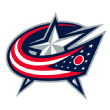
Preseason over/under: 69.5
Current points pace: 82.0
What’s gone right? Columbus has been surprisingly fun to watch, and Sean Monahan is a major reason why. The Blue Jackets brought him in this summer and while Monahan intended to play with his good friend Johnny Gaudreau, he channeled Gaudreau’s energy as the team’s leading scorer (with 19 points in 19 games). Zach Werenski is back at full strength to helm Columbus’ back end, and a collective defensive effort has helped the Blue Jackets to sit 20th in shots against (29.1 per game). Columbus is tenacious and scrappy and they’ve earned wins over good teams too, including a wild overtime victory over Tampa Bay in which the Blue Jackets trailed 3-0. Somehow, Columbus finds a way to trend ahead of their curve.
What’s gone wrong? The injury to Boone Jenner that may sideline the team’s captain for up to six months was a bad start to the season. The Blue Jackets have received average goaltending again, with Elvis Merzlikins clocking in with a below-.900 SV% and 3.08 GAA. Backup Daniil Tarasov hasn’t been much help in that respect either (.861 SV%, 4.04 GAA). Columbus is now third-worst in goals against per game (3.58) and they don’t have the offensive scoring depth to outrun that issue. It’s the self-inflicted wounds that get the better of Columbus and keep them from being a possible competitor. Their mediocre power play (18.2%) and penalty kill (77.8%) haven’t been momentum-shifters, either. The Blue Jackets have notched consecutive wins only twice all season, and those losing skids (say, for six games) can do a number on confidence.
Grade: B-. Columbus went through the ringer this summer and is going to feel the effects of losing Gaudreau for this entire campaign and beyond. First-year bench boss Dean Evason inherited a team that had cycled through two previous coaches in short order and were working under a new GM in Don Waddell. But Columbus still needs more from it’s young stars, including Adam Fantilli (just nine points in 20 games) and Justin Danforth (eight points in 17 games). There’s still untapped potential in Columbus.

Preseason over/under: 63.5
Current points pace: 64.9
What’s gone right? Mikael Granlund‘s trade value. Similar to the Blackhawks, one of the items that can help the Sharks’ long-term goals is by trading pending UFAs who could potentially offer a contender another dimension in their chase for a title. It’s possible that Granlund’s efforts with the Sharks could see a title contender taking interest. Granlund is on pace to finish with what would be a career-high 89 points with his previous personal best being 64 points. He’s in the final year of a deal that pays him $5 million annually and could present himself as a top-six or top-nine option for a team needing two-way help down the middle.
What’s gone wrong? Macklin Celebrini missed 12 games because of injury. Suffering through one of the most trying seasons in recent NHL history came with the reward of drafting Celebrini and seeing the impact he could make. A lower-body injury kept him out of the lineup which saw him miss 12 games. The former Boston University star center marked his return by scoring three goals and five points in his first five games in November. For the season, he has seven points in 10 games.
Grade: B-. Context and perspective are crucial when it comes to understanding how the Sharks have performed this season. While they remain in the sensitive stages of their rebuild, they are already projected to finish with more points than what they had in 2023-24 when they finished with a league-worst 47 points. If they can continue to win games while providing chances for their young core of Celebrini, William Eklund, Will Smith and Yaroslav Askarov, who was just called up, to grow? The 2024-25 season has a chance to be a formative one for their future.

C grades

Preseason over/under: 90.5
Current points pace: 78.1
What’s gone right? The Red Wings have benefitted from an (unexpected?) youth movement headlined by Marco Kasper, Simon Edvinsson and a (suddenly!) striking Jonatan Berggren. The 20-year-old Kasper has been so reliable as a physical force up front that coach Derek Lalonde recently promoted him to play on a line with Patrick Kane and Alex DeBrincat. And the 21-year-old Edvinsson had been terrific patrolling Detroit’s blue line before suffering a lower-body injury. The Red Wings have also received solid goaltending from offseason signee Cam Talbot (.921 SV%, 2.62 GAA) and their power play is excellent, sitting just outside the top 5 at 28.1%. Detroit is good in one-goal games, too, posting a 4-1-2 record in those outings this season.
What’s gone wrong? Detroit has been so strong on the man advantage its nearly overshadowed how poor their 5-on-5 scoring is. The Red Wings are 31st in even-strength goals — only Nashville is worse. Detroit’s inability to generate offense has robbed them of too many wins already this season. The Red Wings’ penalty kill is a league-worst now (66.7%), which is another constant hurdle holding them back. And, as has been the case for several years, Detroit simply can’t deliver a full-team by-in on defense — they’re giving up the fourth-most shots on net (31.9 per game, fifth-most in the league), and allowing 3.15 goals against per game.
Grade: C+. Detroit is running out of excuses. The Red Wings have been maturing throughout this extended rebuild and yet the purported progress simply isn’t showing. And it feels like Lalonde is increasingly closer to paying the price with his job. The Red Wings are by all accounts a quiet group, and it could be the lack of vocal veteran leadership keeping them in a rut. Captain Dylan Larkin must be the change there, and veterans like Kane, Vladimir Tarasenko and J.T. Compher can help too (some added offense from those three wouldn’t hurt, either). The Red Wings have been shuffling the deck up front lately and maybe that’ll help jumpstart Detroit in the next quarter of this season.

Preseason over/under: 108.5
Current points pace: 89.5
What’s gone right? At least they’re better off now than they were this time last year. It was around this time a year ago when the Oilers made the decision to move on from Jay Woodcroft following a 3-9-1 start. They turned to Kris Knoblauch, and proceeded to come within a game of winning their first Stanley Cup in more than 30 years. As of Nov. 21, the Oilers were in one of the two Western Conference wild-card spots. While the Oilers aren’t in first place in the Pacific, there is less ground for them to make up compared to this time last season.
What’s gone wrong? A number of different items have led to the Oilers appearing disjointed at times this season. They’ve received goals from their supporting cast but the production from the now-injured Viktor Arvidsson along with Zach Hyman, Ryan Nugent-Hopkins and Jeff Skinner isn’t what was expected. While they’re among the NHL’s best in allowing the fewest scoring chances per 60 and shots per 60, their goaltending is in the bottom 10 of team save percentage. Their special teams have also struggled. Their power play is in the bottom third of the NHL while their penalty kill, a strength from their playoff run, is the fourth worst unit in the league.
Grade: C+. Last season proved the Oilers don’t need to be in a playoff spot by mid-November in order to make the playoffs. That said, one of the strengths of last year’s Oilers’ team was their ability to recognize and then adapt to adjustments. It was something Knoblauch and his staff not only did during the regular season, but they did it throughout the entirety of the playoffs. If the Oilers can use that same formula again this season, it could make their slow start seem like a minor misstep toward a much bigger journey.

Preseason over/under: 85.5
Current points pace: 78.3
What’s gone right? Philadelphia coach John Tortorella may have choice words for those calling Matvei Michkov a “savior,” so instead we’ll just say the Flyers’ electrifying rookie has given Philadelphia some salvation. He’s already the club’s second-leading scorer (with 16 points in 19 games) and is the focal point for a fan base desperate to believe Philadelphia can return to its former glory. Travis Konecny (with 25 points in 21 games) is doing his part. Tortorella has seen progress from some of the Flyers’ young stars (other than Michkov), including Morgan Frost. Philadelphia’s penalty kill is also a major strength (third overall at 86.8%), a testament to heavy-minute contributions from Cam York and Travis Sanheim.
What’s gone wrong? The Flyers have faltered compared to a season ago, when an exciting early push made them look like a possible playoff contender. Philadelphia has been slower out of the gate this season, with a middling offense (averaging 2.71 goals per game) and a long list of defensive problems that’s put them sixth-worst in goals against (3.43 per game). Some of that is goaltending issues; Samuel Ersson has been fine, but they have lacked a solid backup. There’s not often enough depth scoring, either. And while Tortorella has been optimistic about Philadelphia’s up-and-comers, they haven’t shown enough progress to move the needle and offer the Flyers a needed boost to get them back in that postseason hunt. At some point Philadelphia must turn a corner in that respect.
Grade: C. Tortorella cost his team some points because he’s made Michkov — the organization’s biggest bright spot — a healthy scratch at times, and continuously seems to downplay his importance. Yes, Tortorella wants to avoid putting too much pressure on a 19-year-old, but like it or not he’s one of the team’s best players and deserves to be recognized as such. Outside of that, the Flyers just haven’t played up to expectations. Philadelphia feels capable of stronger output if they can see some strides up front and get regular contributions from more skaters.

Preseason over/under: 87.5
Current points pace: 85.7
What’s gone right? Everything involving Joey Daccord. Perhaps the place to start is that the Kraken got Daccord signed to a five-year deal, which gives them two more years of contract certainty with a goaltending tandem that includes Philipp Grubauer. From there, Daccord has essentially performed like one of the NHL’s best goalies this season. His 10.6 GSVA ranks second in the league behind Dostal. On the whole, the former Arizona State star ranks in the top 10 in wins, GAA and save percentage.
What’s gone wrong? They’ve missed Vince Dunn. Although it was just four games, Dunn was starting to look like the version that had a breakout season in 2022-23 when his 14 goals and 64 points helped the Kraken reach the playoffs. Dunn had three points in four games before he sustained an upper-body injury that saw him miss the next 17 games. Getting Dunn back would give the Kraken another puck-moving option on the back end that, along with Brandon Montour, could help facilitate more scoring chances.
Grade: C. Dan Bylsma’s first year in charge of the Kraken has seen them retain the defensive identity they had under Dave Hakstol but add a bit more offense. Averaging 2.76 goals per game means they’re 20th in goals which is slightly below league average, but it’s still a major improvement considering the Kraken finished with the fourth-fewest goals per game last season. If those improvements can continue and they can fix a sputtering power play, they could hold on in the Western Conference wild-card race.

Preseason over/under: 76.5
Current points pace: 65.6
What’s gone right? Montreal has gotten significant performances from its key forwards, including Nick Suzuki (averaging a point per game), Cole Caufield (12 goals in 20 games) and resurgent veteran Brendan Gallagher (with eight goals in 20 games). Rookie Lane Hutson has made a strong transition to the NHL game, averaging 22:55 of ice time per game with good results (11 assists). The Canadiens as a whole have also begun generating and capitalizing on more high-danger opportunities up front, and their special teams (ranked 11th on both the power play and penalty kill) are solid. And when goaltender Sam Montembeault is dialled in (he’s got a .899 SV% and 3.08 GAA), that’s a major difference-maker for the Canadiens in the crease.
What’s gone wrong? The preseason injury to Patrik Laine — who Montreal acquired via trade to bolster their offense — was a bad omen. But it’s the Canadiens’ defensive deficiencies that seem never-ending. Montreal is allowing the second-most goals-against (3.80 per game) — the Canadiens gave up four or more goals in nine of their first 15 games alone — and they allow the seventh-most shots against (30.2 per game). Montreal has earned consecutive victories just twice all season while they’ve strung together multiple losing skids. The Canadiens are prone to slow starts they can’t recover from, and playing from behind won’t ever get Montreal where this rebuild is supposed to take them.
Grade: C-. The Canadiens just don’t look like a team making progress — or at least enough of it. The same narratives keep cropping up and Montreal appears powerless to change course on its own story. Martin St. Louis has tried to stay positive about what strides the Canadiens do make, but they aren’t lasting long enough from game to game. Montreal is too often beating itself, speaking to a potential lack of growth and maturity for the entire group. If the Canadiens can come into their own and truly establish an identity, then some of those problems might be overcome and allow Montreal to make the most of this season.

Preseason over/under: 87.5
Current points pace: 74.2
What’s gone right? The Mikhail Sergachev trade. Acquiring Sergachev was done with the intent of giving the Utah Hockey Club a top-pairing defenseman who could be trusted to play in every situation ranging from 5-on-5 to the penalty kill to the power play. Through his first 21 games, he’s been just that. He’s averaging a career-high 25:29 per game which is first on the team and ranks third in the NHL. Sergachev also leads the UHC in 5-on-5 minutes and short-handed minutes and is third in power-play minutes. He’s also on pace to finish with what would be a career-high 20 goals.
What’s gone wrong? Consistently scoring goals and/or consistently preventing them. The UHC is in the bottom 10 when it comes to goals per game and have the league’s third worst power play with a 12.7% success rate. Plus, if it’s not for the Canadiens and Red Wings, the UHC would have the fewest shots in the NHL, too. As for its defensive profile? Utah is eighth in goals allowed and the penalty kill is the seventh worst in the league.
Grade: C-. Could this be a potential wild-card team? Could this be a team that is more in line for a lottery pick? Or is this a team that’s not good enough for a wild-card spot but is too good to be in the draft lottery? What makes the Utah Hockey Club’s situation so challenging is it could go in a number of directions. On Nov. 25, the team was five points out of the final wild-card spot.

D grades
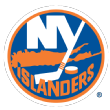
Preseason over/under: 91.5
Current points pace: 78.3
What’s gone right? New York leans on goaltender Ilya Sorokin to be fantastic, and he is, holding a .917 SV% and 2.52 GAA). Semyon Varlamov (.903 SV%, 2.60 GAA) is good, too. New York has held their goals-against average below three, and shots-against average under 30, and that’s due to not just the goaltending but a decent back end run by the rising star Noah Dobson and veterans like Ryan Pulock. Kyle Palmieri picked the perfect season to have his best showing in years (with 18 points in 21 games) while Bo Horvat (14 points) and Anders Lee (13 points) have been solid.
What’s gone wrong? New York doesn’t have enough scoring. And it’s not just because Mathew Barzal has been out most of the season with an injury and Anthony Duclair recently joined him in the sick bay. Regardless, it’s the same old story for these Islanders, where they’ll be in a low-scoring, one-goal game, hoping either for a goal (unlikely) or Sorokin (more likely) to save them. It’s not happening. New York is 26th in scoring (2.48 per game). Their awful power play (31st, 13.3%) is doing the opposite of getting New York on a scoresheet, and their penalty kill (31st, 68.2%) is surprisingly bad. The Islanders don’t seem to be getting the message from coach Patrick Roy about what needs to change for them to dig out of this early-season hole.
Grade: D+. The Islanders are being docked another point here because their problems are frustratingly identical not only season to season but game to game. New York is losing games it should win in head-scratching fashion because of careless mistakes they aren’t focused enough on avoiding given how goals are at such a premium. GM Lou Lamoriello can’t wait much longer to address some of the needs up front if New York is going to round into any sort of playoff form by the new year. It already feels like it could be too little, too late.
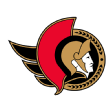
Preseason over/under: 90.5
Current points pace: 74.2
What’s gone right? Ottawa has been solid defensively when it comes to limiting shots against — they’re relenting the sixth-fewest overall (27.0 per game) and they aren’t prone to serving up high-danger scoring opportunities. The Senators have maintained a strong power play to start the season, sitting fifth overall (28.8%) and offensively they’re generating plenty of shots (third overall, at 32.4). Tim Stutzle and Brady Tkachuk have both produced at a point-per-game pace, and Thomas Chabot looks improved, helping to lead Ottawa’s defensive corps. Ottawa has earned tough wins over Atlantic rivals — including Toronto and Boston — to boost its confidence.
What’s gone wrong? Linus Ullmark was Ottawa’s splashy offseason acquisition, and he hasn’t played consistently like the Vezina Trophy winner Boston could lean on. That fickleness — leading to a 4-7-1 record with .881 SV% and 3.10 GAA — is too often hurting Ottawa. The Senators’ penalty kill — for which good goaltending is key — ranks 14th (78.7%). Ottawa is also one of the lowest scoring teams at 5-on-5 (24th overall) and while having a hot power play is one thing, it’s not going to sustain the Senators for long stretches. The recently announced injury to Artem Zub — out long term with a fractured foot — doesn’t help Ottawa’s prospects from here either.
Grade: D+. Ottawa should be better than this. Ullmark’s disappointing start is one thing, but there’s too much young talent for the Senators to once again be so far off their preseason point pace and out of the playoff race. It’s not about making trades; the changes should be able to come from within. The Senators start to shrink and visibly deflate when there’s a breakdown or costly mistake. Mentally tough teams can power through those setbacks. That’s where Ottawa can do themselves a great service — because the talent is there to compete.

Preseason over/under: 99.5
Current points pace: 85.7
What’s gone right? Well, not a whole lot. But what the Bruins haven’t done is waste time in the face of their challenges. GM Don Sweeney relieved Jim Montgomery of head coaching responsibilities before Thanksgiving and turned the bench over — in the interim — to Joe Sacco. That puts a well-respected part of the organization in position to pull Boston out of its skid, and potentially salvage something from this season before it’s too late. Kudos to Sweeney for making a change sooner than later; it’s better for everyone involved. It’s also fair to say the Bruins made a decent signing in Joonas Korpisalo, who’s been solid at 4-2-1 with a .911 SV% and 2.38 GAA backing up Jeremy Swayman (and oh yes, we will get to him).
What’s gone wrong? Let’s start with Boston’s goaltending. Swayman took a hardline with the Bruins in offseason contract negotiations, and hasn’t remotely lived up to the eight-year, $66 million investment as Boston’s starter (Ullmark being long gone to Ottawa). Swayman is an abysmal 6-7-2 with an .887 SV% and 3.30 GAA. Yikes. The Bruins’ offense has been no help, either. The Bruins are last in scoring (2.21 goals per game) with the league’s worst power play (12.8%) and 19th-ranked penalty kill (77.9%). There was no way Montgomery could hold onto his gig with that sort of poor production across the board — although the players don’t deserve a pass, either. Brad Marchand and David Pastrnak haven’t been remotely good enough leading Boston’s offense and that’s got to become the norm for Boston to get rolling.
Grade: D. Boston couldn’t have written up a worse start to this season. The Bruins have had an aging core for a while, but the drop off they’ve displayed over the last six weeks is still a shock. It’s not as if the Bruins are just deficient in one area; that might make the fixes appear more manageable. Right now, Boston isn’t receiving the right contributions from its core or its new additions — Elias Lindholm and Nikita Zadorov were heralded offseason signings that haven’t moved the needle. Can Sacco kickstart the Bruins back into gear? That’s Boston’s best hope of climbing out of their current hole.

Preseason over/under: 73.5
Current points pace: 62.5
What’s gone right? Ryan Donato‘s trade value. Pending UFAs can be valuable for rebuilding teams because of the draft capital they could command in a trade. With Donato on pace for his first 30-goal season, and with a team-friendly $2 million cap hit, it could make him an attractive option for contenders needing a top-six or a top-nine forward. The Blackhawks could capitalize on Donato’s success by adding more capital for a rebuild that has 17 draft picks over the next two cycles, with seven of those picks in the first two rounds.
What’s gone wrong? They’re struggling to score goals — again. Rebuilds can be judged on the progress they’ve made from season to season. A lack of goals was a problem in 2023-24 and is still a problem in 2024-25. Last season saw them average 2.17 goals per game which was the worst mark in the NHL. This season they are averaging 2.32 goals per game which is the second-worst return in the NHL. That’s further compounded by the fact they’re averaging the fewest scoring chances per 60, the second-fewest high-danger scoring chances per 60 and the sixth-fewest shots per 60. Their offensive woes have extended to their teenage star Connor Bedard, who recently said he felt like he could name “100 things” he could do better while adding, “hopefully I’ll find my game again.”
Grade: D. An aggressive offseason that saw them add veterans such as Tyler Bertuzzi and Teuvo Teravainen created an expectation the Blackhawks could surpass the 52 points they accrued last season. Perhaps there’s a chance the Blackhawks might be able to establish some sense of cohesion at some point this season. For now, the Blackhawks are projected to finish with 56 points. Should that hold, it would be a mere four-point improvement from last season. Furthermore, it could see the Blackhawks facing the prospect of winning the draft lottery for the second time in three years.
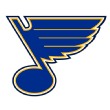
Preseason over/under: 86.5
Current points pace: 74.9
What’s gone right? It could be the late November coaching change. Blues GM Doug Armstrong told reporters that firing Drew Bannister was largely based on Jim Montgomery being available less than a week after he was fired by the Bruins. Still, the Blues struggled in several areas in Bannister’s first full season after he went 30-19-5 during the 2023-24 after taking over from Craig Berube in December. The Oilers are the most recently prominent example of a November coaching change paying dividends. Could the Blues be next?
What’s gone wrong? Quite a bit. They’ve already had a pair of three-game losing streaks before American Thanksgiving. They’re in the bottom five of goals per game. They’re in the bottom five of shots per game. They’re in the top 10 of most goals allowed per game. They have a bottom five power play and a bottom 10 penalty kill. They have the fourth worst team save percentage in 5-on-5 play. They’ve also watched two of their most consistent performers to start this season — Philip Broberg and Robert Thomas — miss games due to injuries.
Grade: D. If not for the Predators, the argument could be made that the Blues have had the most disappointing start to the season of any Western team. Finishing six points out of the final wild-card spot in 2023-24 created the belief that the Blues could be back in the mix for a playoff spot this season. Maybe there’s still a chance that the Blues can find the consistency that’s eluded them. That’s why Armstrong felt a coaching change in late November was necessary. It’ll now be up to Montgomery to help the Blues avoid missing the playoffs for a third straight season.

Preseason over/under: 98.5
Current points pace: 63.4
What’s gone right? Juuse Saros continues to keep them in games. Struggling teams look for any sort of consistency as a proverbial lighthouse. Saros has been that, despite the fact that so many other items have been problematic. As more teams move to tandems, he continues to be one of the few goalies who can play every game. He’s on pace for his fourth straight season of more than 60 games played. While much can change between now and the end of the season, Saros has a 2.56 GAA that could be his best since the 2020-21 season. He also has the NHL’s best GSVA, at 7.8.
What’s gone wrong? They’re the NHL’s worst scoring team. Entering Nov. 21, the Predators were averaging a league-worst 2.30 goals per game … while somehow still having a top 10 power play. What makes that disconnect even more damning is the fact they bolstered their top-six forward group by adding Jonathan Marchessault and Steven Stamkos in the offseason. Furthermore, coach Andrew Brunette’s reputation is his teams score goals in bunches — the Devils and Panthers were top five teams in goals per game when he was the interim and assistant coach for both teams.
Grade: D-. They were a playoff team last year and were considered and considered one of the teams to watch in the West heading into this season because of their aggressive offseason. Instead, they’ve become a team that’s getting further away from a wild-card spot as the unofficial American Thanksgiving Day cutoff draws closer. As of the quarter mark, they are 32.1 points off their projected preseason pace, the worst differential in the league. On the optimistic side, they showed last season that they could overcome poor stretches of play and pile up victories. Replicating that again this season could get them back in a wild-card spot. If not? It could force the Preds to confront some tough decisions about their long-term plans.

Preseason over/under: 90.5
Current points pace: 64.2
What’s gone right? Two words: Sidney Crosby. The Penguins captain secured another milestone when he became just the 21st player in history to hit 600 goals. And that was after he hit the 1,600-points mark this season (only the 10th player ever to do it). Crosby paces the Penguins in points (21 in 23 games) and is a beacon of hope on the ice every game. Evgeni Malkin (20 points in 23 games) remains a top-tier contributor as well, and Drew O’Connor has centered a third line packed with potential to help. And there’s a potential emergence in young Owen Pickering, the club’s 2022 first-round draftee who’s been a steady presence on their back end.
What’s gone wrong? Pittsburgh is lacking in direction. GM and president of hockey operations Kyle Dubas is trying to retool and compete at the same time, and it’s just not working. The Penguins are already poor in most statistical categories — they’re 25th in scoring, are allowing the most goals against per game (3.96), the third-most shots against per game (32.7) and rely on average special teams. Pittsburgh has won just four games in regulation, and their goal differential is a league-worst minus-34. Tristan Jarry was usurped in net by Alex Nedeljkovic and Joel Blomqvist, both who were fine, but playing behind a porous defense that’s led to one embarrassing loss after another. Even Jarry’s return has been poor (he’s 0-2-1) thanks to those issues. Dubas swung and missed on too many moves — the glaring one being Erik Karlsson, already a minus-13 on the season — and even Michael Bunting has been a disappointment. There’s no depth for the Penguins to rely on, and few options for coach Mike Sullivan to believe in.
Grade: D-. Dubas has said for fans to “be careful what you wish for” when it comes to potentially rebuilding a team. And that’s fair; we’ve seen how long an overhaul can take. But what Pittsburgh is doing now isn’t fair, either. The Penguins have to be better in every aspect. Crosby can’t carry the offensive burden alone, there’s too little commitment defensively and without a strong No. 1 goaltender, Pittsburgh is doomed to stay mired in its current mess. Will Sullivan be around long enough to see them out of it? That’s a question that will continue to linger well into this season unless — or until — a change is made.


